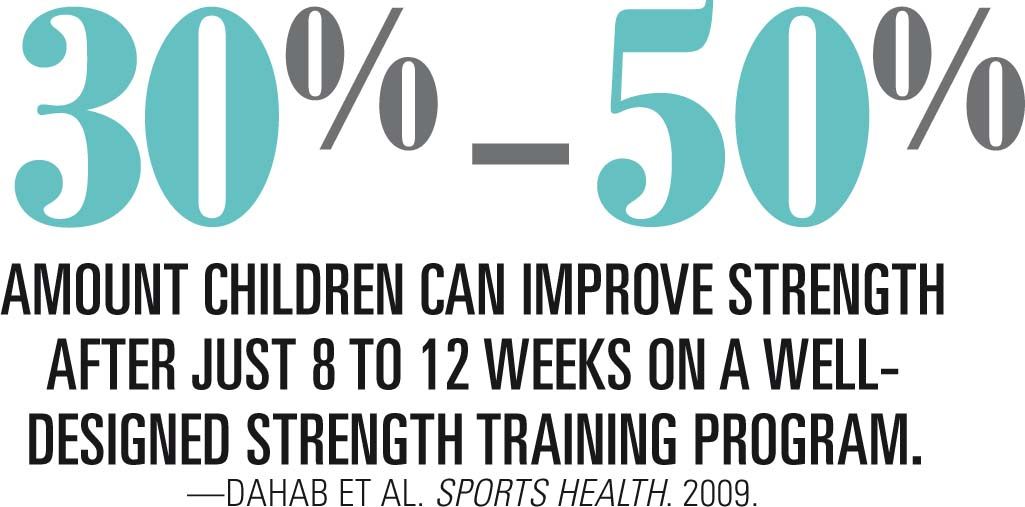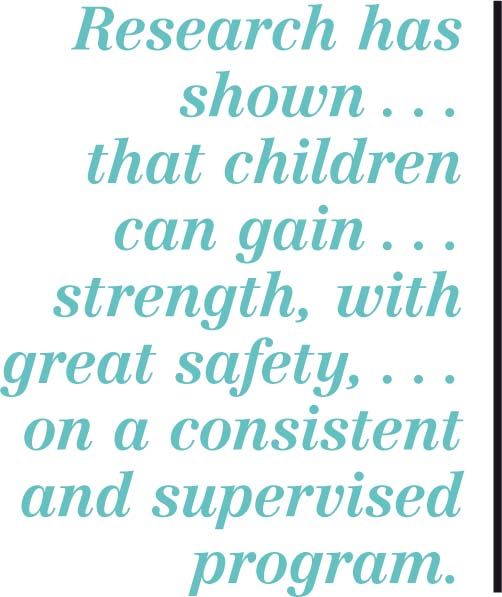Bigger, faster, stronger
Properly supervised strength training can help children both short-term and long-term, providing the foundation for an active, healthy life.
Properly supervised strength training can help children both short-term and long-term, providing the foundation for an active, healthy life, said Paul Stricker, MD, FAAP, in his session "Bigger, faster, stronger: Myths and realities of strength training in children" presented at the American Academy of Pediatrics 2016 National Conference.
A few years ago, physicians were very cautious about recommending strength training for children-reserving it for highly trained athletes with specific goals. Now, said Stricker, it’s shown that incorporating strength training, with supervision, improves not only sport-specific skills, but also helps reduce injuries and raise overall fitness levels. Pediatricians can be more confident in recommending that children participate in some type of strengthening program that is appropriate for their age and needs, with strict supervision and proper technique.

To that end, the new concept of training age helps determine what's appropriate for each child. Rather than pronouncing certain activities suitable or unsuitable for specific numerical ages, Stricker explained, this concept suggests that a 12-year-old with 6 years of training experience can undertake a much more progressive program than one with a year of basic sports activity under his or her belt.
Pediatricians also may recommend strength training exercise much more frequently than they presently do for overweight children. Telling them to go jogging is not the most user-friendly first step. A well-designed strengthening program often provides a more manageable path toward boosting their metabolism and seeing quick results.
Related: How sports specialization can hurt
Gone are the concerns for growth-plate injuries, or the possibility of children accidentally dropping weights on their feet. Exercise clearly has risks, Stricker pointed out, but research has shown repeatedly that children can gain significant strength, with great safety, while on a consistent and supervised program. Rather than proving strength training safe for kids, research has shifted toward documenting how strength training exercise boosts performance, builds natural athletic skills, reduces injuries, and points children toward a lifetime of activity.
Although pediatricians generally lack the background to recommend specific training programs, Stricker said they now can recommend based on the research that children start a strengthening program guided by a certified trainer or program that works with children.
“We used to worry what would happen if a child lifted weights,” said Stricker. “Now we worry more about what might happen if they do not.”

NEXT: Commentary
COMMENTARY
Dr. Stricker's talk encourages pediatricians to suggest weight training as a first step to exercising. Previously, concerns for growth-plate injuries or stunting growth made strength training for children somewhat taboo. Now, however, we know that basic strength training is a great-and relatively safe-way that children and adolescents can get started with exercise, or enhance their fitness level.
With guidance, kids can learn how to train properly with correct form and appropriate rest periods. A structured strengthening program has the potential to ease children who have been previously sedentary into more physical activity, with an added goal of developing enthusiasm for fitness. They can do many exercises at home, at their own pace, with bands or their own body weight. This more individualized approach lets them gain interest and experience, ideally spurring a healthier lifestyle.

I appreciate how Dr Stricker emphasizes the need for proper guidance and instruction. I often provide illustrated exercise and stretching handouts and review these with families in the office. I will even have kids-and sometimes parents-demonstrate understanding of basic exercises. Particularly with younger children, we can encourage parents to get involved and exercise alongside them. In my experience, families that exercise together tend to make it a habit. For more advanced athletes, it is crucial to still confirm proper technique.
Growth-plate injuries from early strength training are not nearly as common as overuse injuries and strain to the growth-plate areas from improper training. To clarify, the typical child who begins properly supervised strength training is unlikely to suffer growth-plate damage. However, for the young athlete specializing in a single sport early on, competing year round without proper recovery time, or pushing harder with poor form, the risk of cumulative microtrauma and strain to the areas around the growth plate remains a concern.
Discussing exercise-including real-world examples that kids can do at home-should be a part of each well-child examination starting at school age.
Pediatricians likely will remain a bit cautious, as musculoskeletal education has not necessarily made strength training a topic of focus. Yet this should not be a barrier. Free online resources are available, easily-accessible, and patient-friendly. If we equip ourselves with basic knowledge, these conversations will seem less daunting, and our patients can certainly benefit.

Mr Jesitus is a medical writer based in Colorado. He has nothing to disclose in regard to affiliations with or financial interests in any organizations that may have an interest in any part of this article.